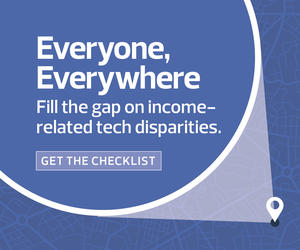1. The Growth of Artificial Intelligence in Higher Ed
With AI research and development increasing at a rapid pace during the pandemic, fears of another “AI winter” seem unfounded at this point. Stanford University’s “Artificial Intelligence Index Report 2021” shows that natural language processing research has leapfrogged so fast that “technical advances have started to outpace the benchmarks to test for them.”
AI is appearing seemingly everywhere in higher education — such as management systems, proctoring, grading, student information systems, library services and disability support.
AI matters for higher education business continuity because the next generation of students (the children of millennials) will be accustomed to experiencing AI technologies in almost every facet of their lives. This may require universities and colleges to rethink curriculums in a way that supports this cohort, also known as “Generation AI.”
DIVE DEEPER: Take a look at higher ed’s increasingly nuanced, AI-powered chatbots.
The University of British Columbia is already using an AI-enabled avatar that delivers natural responses to students. The program is a part of a language learning application called Language Chatsim, where students practice speaking with an avatar in a virtual environment.
Meanwhile, The Pennsylvania State University uses natural learning processes to analyze transcripts of classes. This way, educators can use data points to find patterns that can inform their teaching.
2. Actualizing the Potential of Data Analytics to Improve Education
Universities and colleges are collecting troves of data. However, not many educators know how to interpret this data to improve learning outcomes.
To address the problem at its root, the University of Wisconsin – Madison is offering a Master of Science in Educational Psychology: Learning Analytics program for students who will impact learning and policy. The program teaches graduate students how to navigate the educational data mining landscape.
Meanwhile, Colorado State University has created the Center for the Analytics of Learning and Teaching (C-ALT), a research center for testing and advancing the use of analytics to improve teaching and learning practices.
In one recent project, C-ALT used data visualization to help students optimize their study habits and patterns.
MORE ON EDTECH: Universities are using analytics and artificial intelligence to curb enrollment drops.
3. A Permanent Place for Blended and Hybrid Course Models
Northeastern University spent millions outfitting 200 classrooms for hybrid learning — money that institutional leaders allocated because they believe the hybrid model will remain popular long after the pandemic ends.
GET THE WHITE PAPER: Learn how to build blended learning environments for higher ed.
The University of British Columbia found a creative way to adopt the hybrid model for theater. In April, the theater and film department staged a play where remote actors merged with one another in a virtual environment — while students in Tokyo and San Francisco operated lighting and sound.
RELATED: With hybrid learning on the rise, higher ed sees a Zoom Room boom.
4. The Expansion of Open Educational Resources
Open Educational Resources are learning and research materials that are free for students to access.
The University of British Columbia’s Emerging Media Lab, for example, developed an open-source 3D data visualization of the metabolic network. This OER can potentially be used for not only high school courses, but also courses in medical schools.
In addition to making education more affordable, OERs can also make it easier to for students to learn complex information.
“The objective of this project is to provide a novel way to visualize the information contained in a metabolic network to make it easier to consume and understand,” the university’s website states. “By incorporating interaction into the network and making the visualization in 3 dimensions, we are creating a tool that will make it easier to view information that would, in the past, need several different models to display.”













